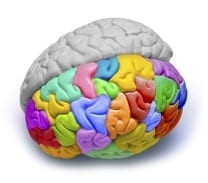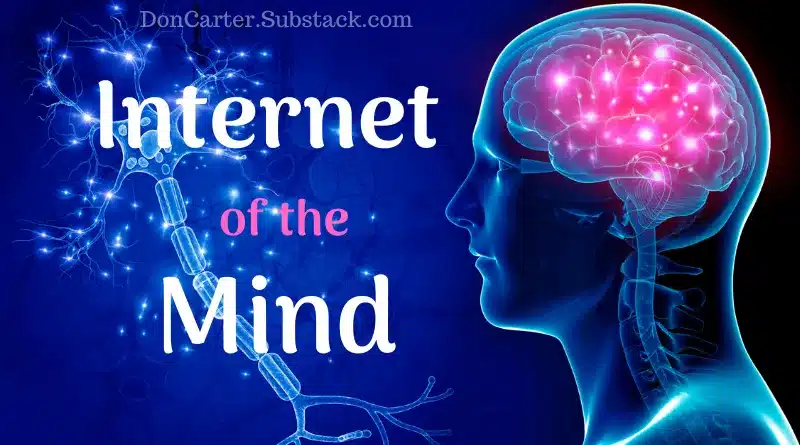
Program Your Subconscious Mind
10 Basic Tips to Program Your Subconscious Mind:

Program as if the change you want has already occurred –- For example, if you want to install a program for healthy eating habits visualize yourself as if upon a movie screen eating veggies, smiling and enjoying the food while repeating the affirmation “You/I love to eat healthy food!”Sometimes using first person…”I”…works best, while for others second person references…”You”… works best. You may want to experiment with both ways to see (or hear) what feels right to you. (see below)
- As a rule, program your subconscious mind in third-person… Do this by watching yourself up on a movie screen in your mind’s eye and use the reference “you” in place of “I”. However, not all people are the same, so if using first-person or “I” seems less awkward and more intense or real to you go ahead and do that. Once the programming part of the session has been completed, at the end it is a good idea to “step into” the movie and experience the finished product as fully and intensely as you can in your mind…act as if you are actually there…seeing, hearing, and feeling as if you are “in the movie” and it is real. (this is how you can “real-ize” what you want)
- Program using as many sensory modalities as comfortably possible – Example: see yourself walking along the beach, feel the sand between your toes, hear the sounds of the surf crashing on the shore, smell the salt in the breeze, hear the gulls overhead.
- Ignore the problem, focus on the solution – Because of the way your mind processes information it’s best to program your subconscious mind with what you DO WANT rather than what you DON’T WANT. Your subconscious mind cannot process a negation. A negation is where you present an idea and append the sentence to imply the opposite of the idea. For instance, saying “I don’t like to smoke” is a negation – something you do not like. Negations are processed by the higher regions of the cortical or thinking brain, (i.e. the conscious mind). So, you CAN process negatives when you read or hear them, but ONLY at the conscious level. Your subconscious mind must process what “I”, “like” and “smoke” means then send that back to the conscious mind where the negation is processed. So, “I don’t like to smoke”, processed at the subconscious level becomes “I – like to smoke.” The thinking mind then processes the negative at the conscious level.
- Use Intensity and Repetition in order to program your subconscious mind –- Making visualizations as vivid as possible and using your powers of imagination will create intensity. Practicing, listening, or programming regularly provides the repetition.
- Keep it simple –- One programming session should include only one exercise or CD at a time. You may have several sessions spread out over the day or week, but one session = one program goal.
- Don’t question it, just allow it to happen –- The last thing you want to do after a programming session is to question yourself about whether it worked. The most powerful changes occur after you have forgotten about the programming and suddenly realize, “Wow, it worked”.
- Belief and Confidence –- Believe in the power of your subconscious mind because one of the most powerful ways to program your subconscious mind is through your belief systems. What the thinker (conscious mind) thinks, the prover (unconscious mind) proves. Beliefs are taken as instructions to the subconscious mind, especially when accompanied by congruent feelings.
- Program in a highly focused, self-hypnotic state –- Hypnosis bypasses the critical factors of the conscious mind allowing a direct input link to the subconscious mind. The subconscious mind will not accept input that does not fit your value & belief systems. This is why changing beliefs does not involve removing or erasing old beliefs. It simply involves installing new, more desirable beliefs and getting the message of your preference through to the subconscious mind – you guessed it, with intensity and repetition!
The Seven Laws of the Subconscious Mind:
Back in the 1930’s, before the Law of Attraction became popular Emmet Fox, the author of many best-selling books including the classic, Sermon on the Mount, outlined seven Laws of the mind. Fox maintained that these Laws must be followed in order to program your subconscious mind. They are:
- The Law of Relaxation: In this law, Fox states that getting into a quiet, relaxed, meditative state is important in order to program your subconscious mind. This is supported by the very nature of hypnosis: in order to bypass the critical, analytical conscious processes and achieve access to subconscious processes it is very helpful to become absorbed in a relaxed, meditative state.
- The Law of Subconscious Mind Activity: Here Fox points out that the subconscious mind is always busy doing something – it’s like a supercomputer that’s always on, making millions of computations and calculations as it runs various embedded programs and routines. Once the subconscious mind accepts an idea or suggestion it begins using all of its vast resources to create and activate a subconscious routine to make it happen. See the Laws of ‘Duality of Thought’ and ‘Growth’ below to learn why this is important.
- The Law of Practice (Repetition): We all know that “practice makes perfect”, here’s why: Every fifteen minutes that we devote to learning something new we are growing new dendrite connections (neural networks) or we are shifting established connections in order to accommodate the new learning. This biological activity has been termed neurogenesis or “Brain Growth”…two things are very important to keep in mind here to program your subconscious mind:
- First, Chronic Stress SHUTS DOWN neurogenesis because the brain diverts most of its energy into self-preservation (survival mode). When the chronic stress is relieved the brain can shift into self-actualization (growth mode). So, the relaxation effect of listening to self-hypnosis CDs is in itself a very important thing — even if you get nothing more than that from the time you invest in yourself by listening.
- Second, the “Use it or Lose it” principle is in effect making practice even more important. (See the Law of Growth below)
- The Law of Forgiveness: According to Fox (and the Bible) Forgiveness is a Spiritual Law that must be followed in order for prayer and meditation to be more effective. Fox states, “Unforgiveness fastens your troubles to you with rivets”. Seemingly agreement with this Law, Twelve-step philosophy sees resentment, a form of unforgiveness, as “…the #1 offender to sobriety”.
- The Law of Duality of Thought: (Intensity) This law points out that the subconscious mind will make the desired changes when it perceives that the changes are indeed desired. To do so, the subconscious mind reads two signals from the conscious mind in order to determine the strength of the overall desire. If those two signals are congruent with each other the signal becomes an instruction to program your subconscious mind. But if the signals are incongruent they will neutralize each other and the signal won’t get through:
- 1. The Thought Signal: Affirmations, auto-suggestions, and visualizations
- 2. The Emotional Signal: The emotional “charge” that goes with the thought. If one repeats an affirmation over and over while feeling discouraged and hopeless the signal will not get through.
- The Law of Growth: This Law of the subconscious mind proposes that “what you think upon grows, and what you don’t atrophies — in other words, “use it or lose it”. What we are learning about the mind bears out the truth of this principle (see the Law of practice above). Fox states, “You cannot dwell upon one thing while trying to create another” — What do you spend your time dwelling upon? Is it what you want or what you don’t want?





